Hello to All,
I am a recent club member and I have now met many of you. I have worked in the aviation industry and had the good fortune to do a lot of travelling both for work and pleasure. I have managed to visit many Aviation associated events and often written articles for distribution to model clubs and magazines. After talking to Mark, we thought the COMSOA club members might be interested in some of the articles too. So as I send them, Mark will put them on the website for your reading pleasure or otherwise!
A CORSAIR STORY
By Alistair Heathcote
Having observed that there are a number of Corsair enthusiasts in the club I thought you might find this interesting.
In October 2008 I visited the British Fleet Air Arm museum near Yeovil, in the county of Somerset. This is in the south west of England. Although the museum was in upheaval preparing exhibits for the 100th anniversary of flight in UK, the Corsair exhibit was fully on display with all placards in place. I have looked at this exhibit before but not studied it until now. The museum approached the work necessary in a way not typical of aircraft museums – they preserved it instead of restoring it – and here is the story behind the display.
The Museum Challenge
- Could they uncover, return to and preserve the original finish?
- Is this work important and worth the time?
- Decided ‘ yes’ and they hoped their approach on this aircraft – KD 421 – might prompt other museums and collectors to think before they ‘unpaint’ and then re- paint.
- Having been successful in their mission, this aircraft is now the last Corsair in the world in totally original service condition and is an extremely accurate and valuable reference source.
The Aircraft – Corsair KD 421
- Built under licence by Goodyear Aviation in 1944
- Delivered by ship to the UK in November 1944
- Joined the Fleet Air Arm (FAA) in Jan 1945 with Squadron 1835. Ended service life in Jan 1946 with Squadron 768 and then became a static training aid at Cranwell College.
- Transferred to the newly opened FAA Museum in 1963, painted and put on display
- In 2000 moved to the restoration facility in the museum for in depth survey and action. The results and findings have proven –
- This is the only complete FAA Corsair in existence
- Is one of only two remaining FG-1A type out of 50 Corsairs remaining in the world.
- Is now the last Corsair known to exist in its original WW2 condition?
Findings during Project Activity
- The aircraft was repainted in the wrong colour blue in 1963 when it entered the Museum. In 2000 this was painstakingly removed using tapes and scrapers, to expose the original 1944 paint finish.
- Investigation of damage discovered on the propeller showed the aircraft had a landing accident on 27th Sept 1945. A maintenance card was found in the Museum Archive that also gave the pilots name. Also helped prove that engine and propeller were those originally, factory fitted.
- The hand applied, original factory serial numbers were still evident on the cowl and fuselage. The gas reactive patch (a red ring on the left hand wing, in full view of the pilot) was still evident. The last known example of this from WW2.
- Many original WW2 markings revealed such as – original roundels, factory applied stencils, dull red gun port tear off strips, remains of tape strip used to cover parts of the folded wing during transit across the Atlantic by ship.
- On the tail, beneath the factory applied dark blue paint is green and grey camouflage paint. Research showed that this tail was a left over from Brewster production after their factory was closed in June 1944. These are the only known Brewster Corsair parts in existence.
- The E2-M Squadron code markings date from time with Squadron 768. Beneath these were discovered a single letter ‘S’ dating from its earlier time with Squadron 1835. There was also a colour change from white to pale blue as the change in Squadron saw a transfer from Europe to the Far East.
This relates a few of the many interesting findings that are detailed on the display boards around the aircraft. Close examination of the actual aircraft does not always reveal the recorded finding clearly as, for some reason, the museum has illuminated this and other aircraft with sodium yellow lighting. This significantly distorts the colours and the colour contrasts making successful photography somewhat difficult. Flash photography was not successful either. Anyway, I have included some photos of the actual aircraft for your appreciation and some photos of the photos that appeared on the display boards, to try to support the text.
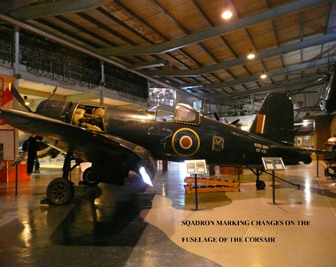
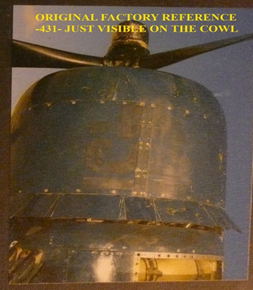
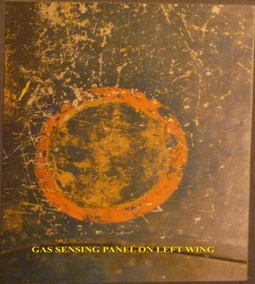
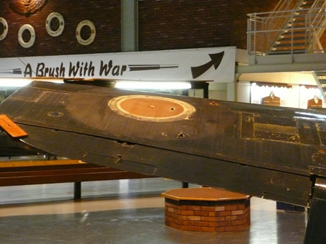
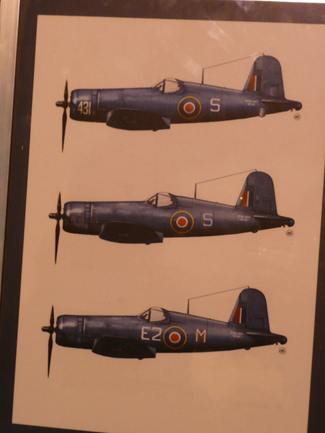
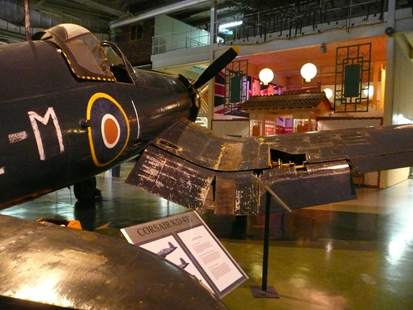
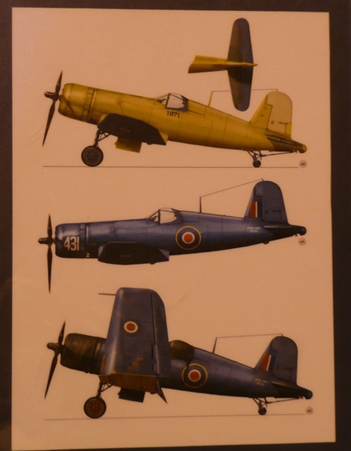
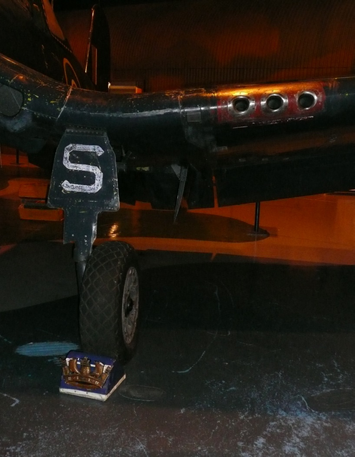
What a finishing challenge for anyone trying to reproduce a model of this one!!! – It sure would be different.
Enjoy
Alistair
A VERY INTERESTING MUSEUM
BY ALISTAIR HEATHCOTE

Most of you are probably thinking – where the hell is Ashburton – well it is less that one hour drive south of Christchurch in New Zealand. During my visit to the Omaka (Blenheim) air show at Easter 2007 I had heard that the Ashburton Museum housed an aircraft unique to the southern hemisphere! As I was touring the south of the island I eventually found the Museum and my informant was correct – a Hawker Harrier vertical take-off fighter!!!.
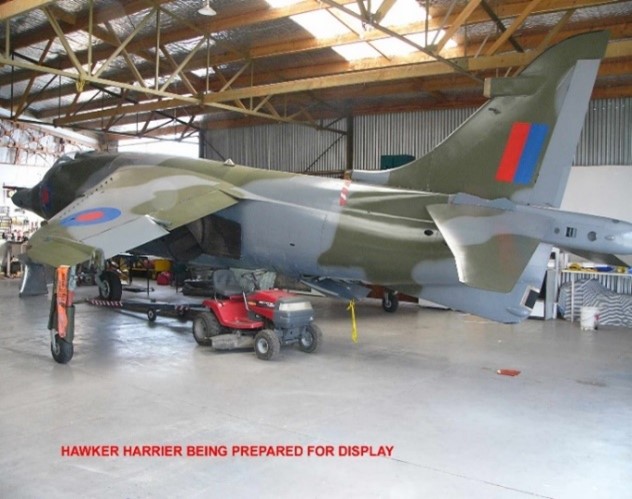
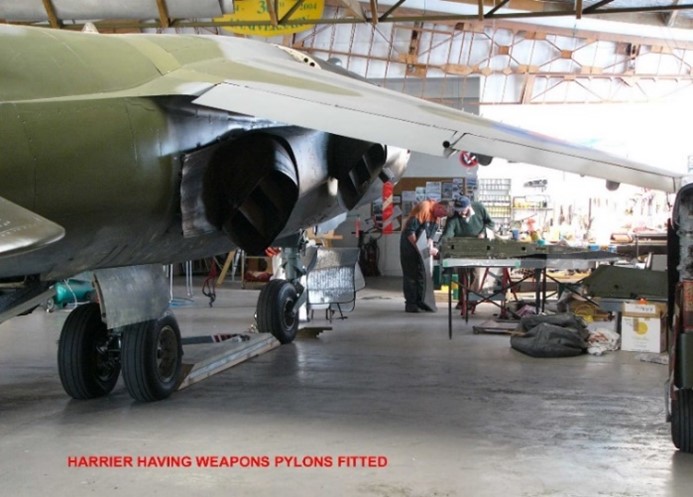
This was complete with engine and weapons racks. I was the only customer and fortunate enough to be given a tour by the Curator. The UK were decommissioning the older Harriers and putting them up for auction - anyone could bid – the Museum did and got the aircraft for $15,000! – all they had to do was transport it to this new location. The transportation cost was higher than this but the Council made a public appeal and raised enough money to ship it and prepare it for display.
Also of interest in the museum was what was claimed to be the oldest radio controlled scale aircraft in NZ. It was being repaired ready for display and the owner was not there when I called in.
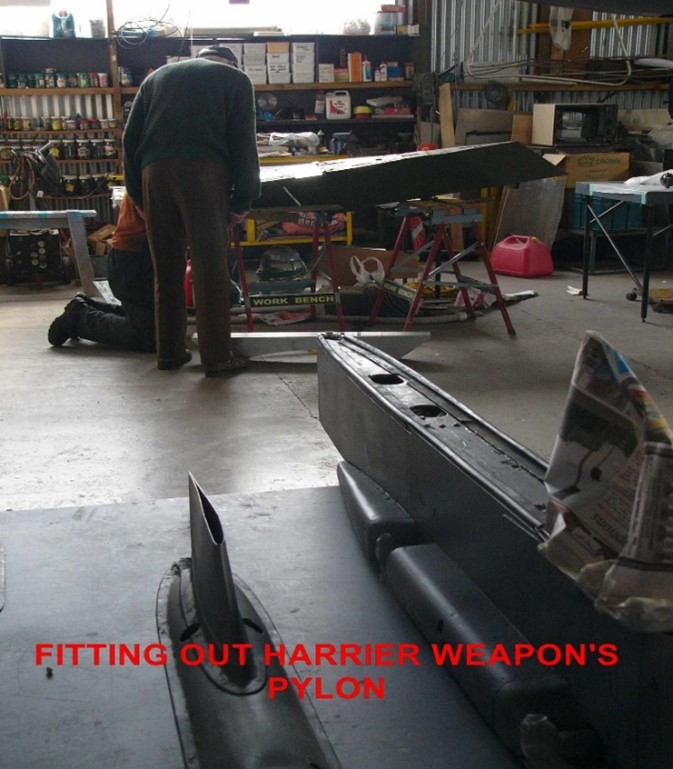
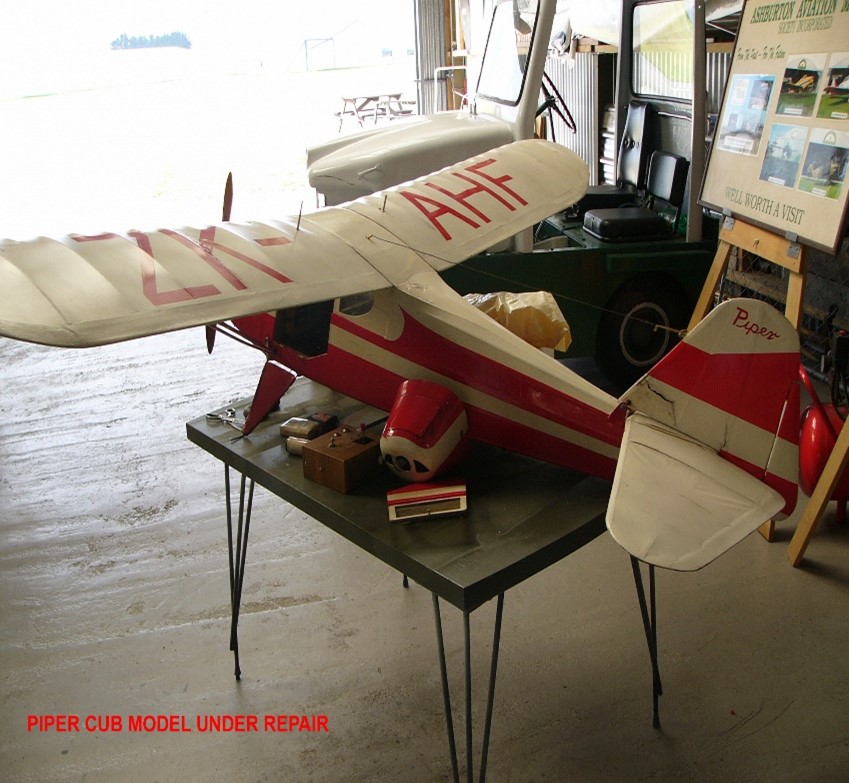
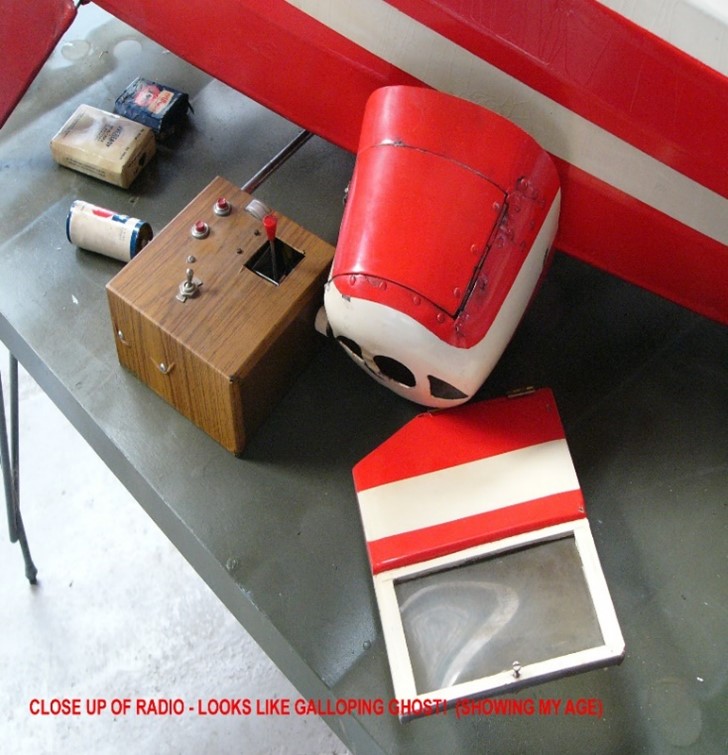

For anyone wanting to make something a bit different to a Piper Cub then maybe this Porterfield 35 W will appeal to you?
A bit of info: - The aircraft was designed by the pupils of Wyandotte High School of Kansas City, USA, as a class project in 1933. The Porterfield Aircraft Corporation acquired the rights to the design and had manufactured over 300 of various versions by 1938.This aircraft (NZ598) was imported to NZ in 1938 and operated by Hawke’s Bay and East Coast Aero Club until Sept 1939 when it was impressed into wartime service, based at Rongatai with No 42 squadron. In 1946 it was purchased by Mr. W.R. Willmott of Timaru as ZK-APJ and flown by him until Dec 1959. After a spell in store it went to the RNAZ Museum at Wigram where it was repainted in its original wartime colours. It was gifted to Ashburton in 1991. The original had a Warner Scarab radial engine but this had reached the end of its life by 1950 and it was replaced by Airwork NZ Ltd with the current Continental C85 flat four. Personally I think the radial engine is more attractive but the flat four is different!
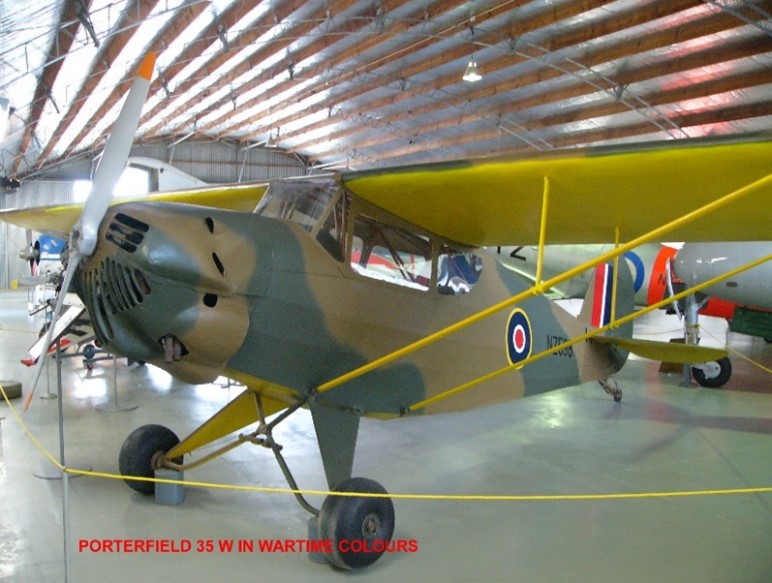
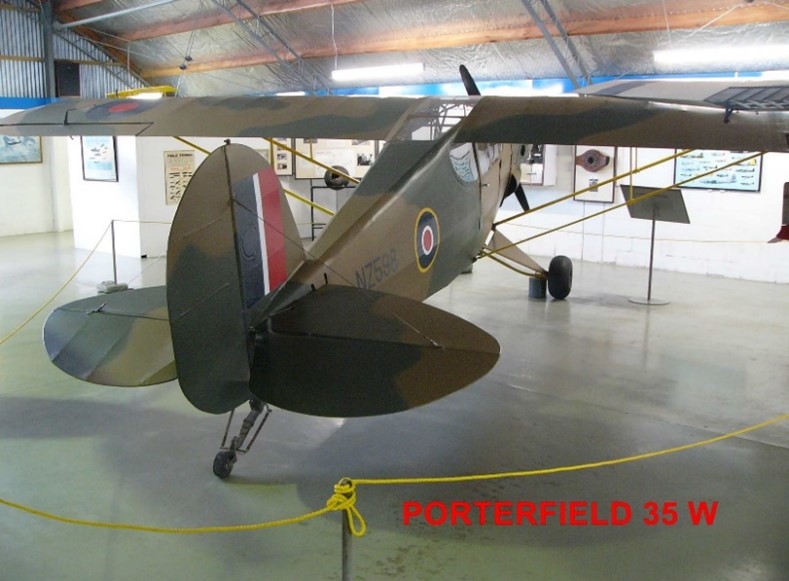
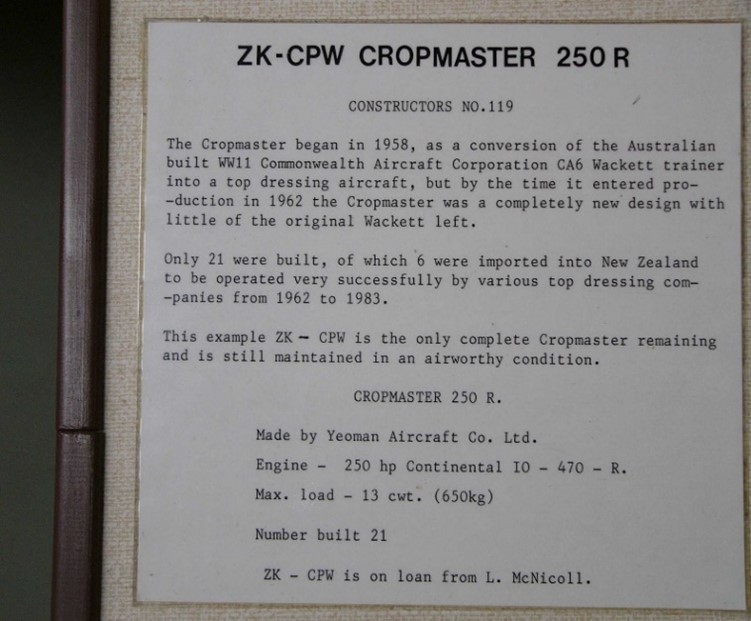
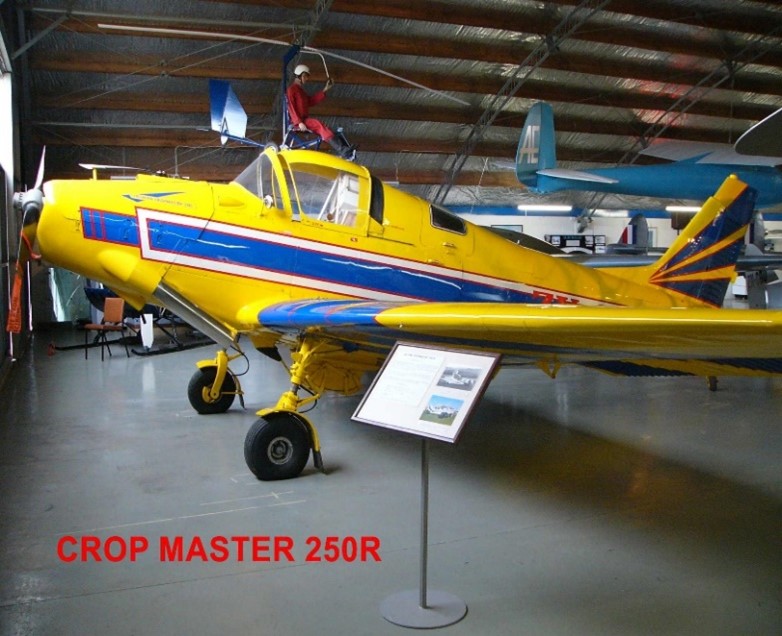
I have some additional pictures if anyone is interested. They were not easy to take as the Museum is quite small and my camera at the time did not have a very wide angle lens.
Hope you like the story
Alistair Heathcote
A DC 3 with an OZ Connection
Prepared By – Alistair Heathcote
In April 2012 I visited the Pacific Aviation Museum (now called The Pearl Harbor Museum) on Ford Island, Pearl Harbour, Hawaii. My visit was on a Sunday morning and the Museum had just finished towing a DC3 (minus outer wings) from Honolulu International airport to the Museum location!! The tow was carried out during the night when minimal traffic was about. Fortunately most of the trip was along the freeway. (Imagine doing the same from Mascot to Bankstown!) As you can see in the photo we (with youngest grandson) saw it still in the open, just after it had arrived.
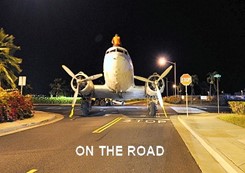
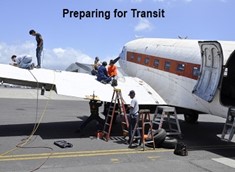

In May 2013 I visited the museum again and saw remarkable restoration progress as shown in the next photos. When I introduced myself as an “aviation enthusiast” the restoration guy was only too pleased to show me around. For the flying control surfaces, Stits fabric is used and sewn on to the ribs and spars. Several coats of dope are applied before the rib tapes, then four or five further coats. Randolph colour dope is then applied. (Stits Fabric is like heavy duty Koverall available from Sig)
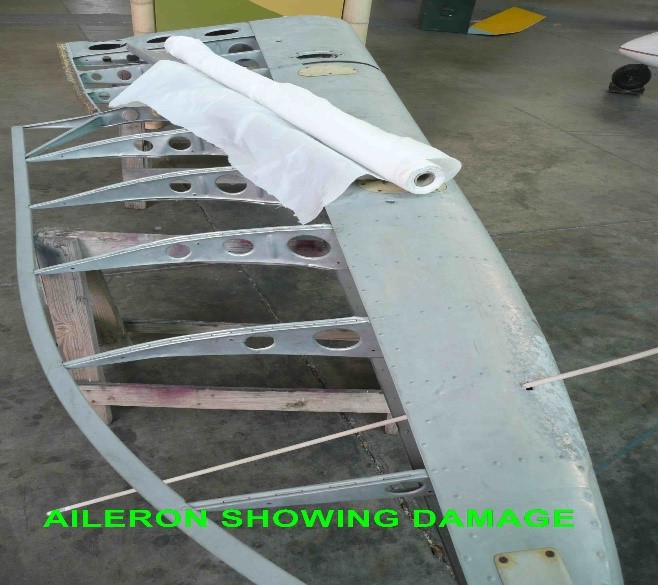
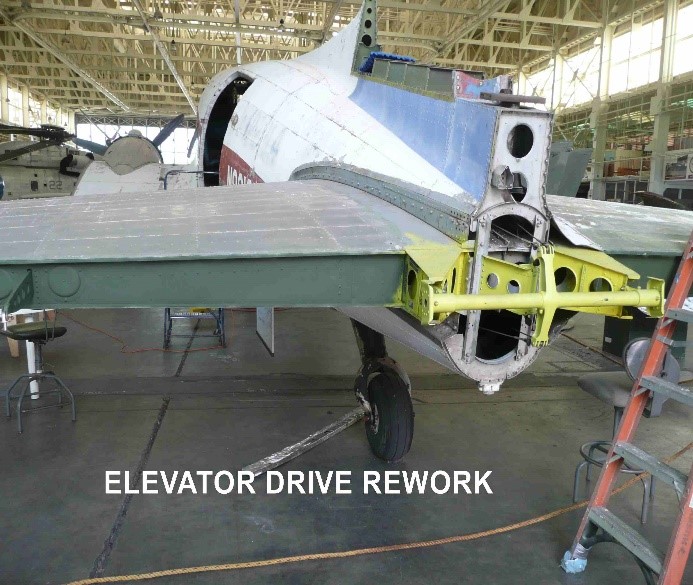
A can of Rust-oleum primer is used for touch up on metal before final coats (Since my visit I have tried Rust-oleum white primer, which is available in Bunnings, with excellent results – just a bit pricey). It is interesting to note the under camber on the outer aileron structure and the holes in the leading edge skin.
I visited again in November 2015 to see it in primer and having its outer wings fitted prior to full paint job. The photos show the changes. As staff were busy with the wings the area was cordoned off with no access for visitors.
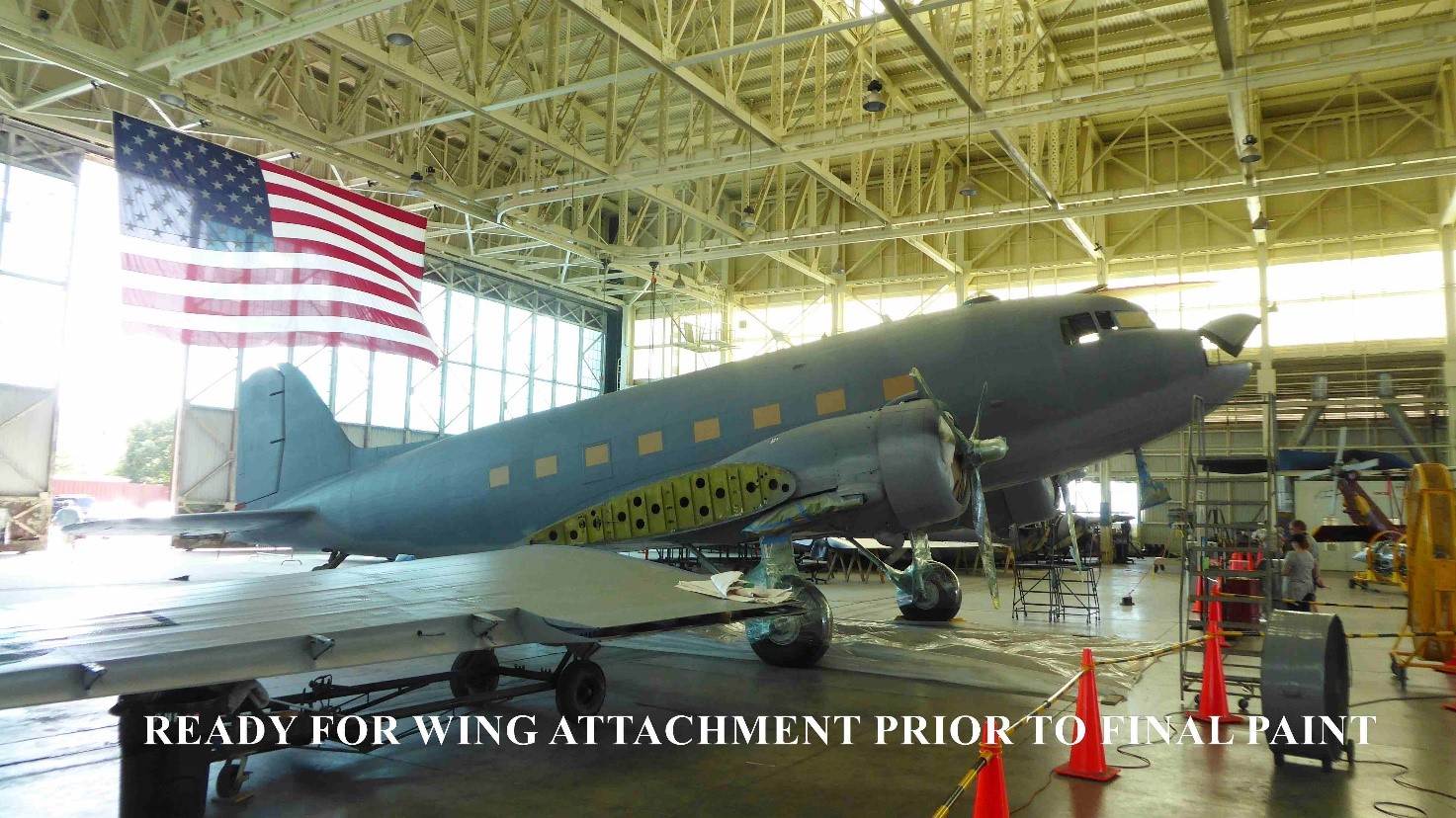
The aircraft will be for static display only and, due to the large amount of restoration work going on in the facility, will not have full interior structure rebuild.
Now fully restored:


HISTORY
- Built Long Beach 1943 as C47
- Delivered to 5th Air force at Brisbane – Dec 12 1943
- Withdrawn from use and transferred to the US Foreign Disposals Commission 1945
- Sold to Australian National Airways in August 1945
- Converted to 21 Passenger and entered Australian Register as VH-ANX Dec 1945 named Tarana
- Worked for various Australian Airlines until prepared for Inter Island Transfer, Hawaii in 1972
- Departed Melbourne Aug 27 1972 – arrived Honolulu 30th August 1972
- Leased to GENAVCO AIR CARGO in 1976 (this can just be observed on the first fuselage photo)
- Registered to GENAVCO in March 1978 and observed under restoration 1983
- Operated by Aloha Airlines (Hawaii) April 1988 by which time it had flown 51,000 miles
- Observed with AERO VENEZUELA markings in May 2001(reason not known but it was used as back ground in the Disney Pearl Harbour film in late 1990’s)
- Withdrawn from use and stored April 2004 and offered for sale
- Aircraft donated to Pacific Aviation Museum in 2010 and transferred in April 2012
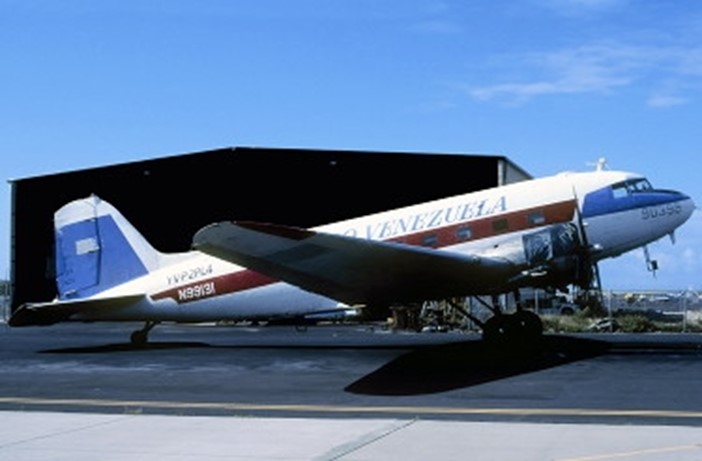
Apologies for some of the photo quality but they were a bit small on the Museum Internet page. http://www.pacificaviationmuseum.org/ If you explore the website you will see they have an R/C day each year on the airfield runway – it is in June. The Museum is now called Pearl Harbor Aviation Museum
I have enjoyed visiting this restoration site as it is normally completely open and visitors are welcomed to get up close.
Cheers - Alistair
The Cassutt Racer
By Alistair Heathcote
Some of you have seen my Orange Cassutt Racer at the field and asked what it is? It is the second one that I have built so here is the story of Tom Cassutt and the two models.
Tom Cassutt – a TWA Captain – designed the Racer in 1951. It was designed for Goodyear Formula 1 racing and other Midget Racer events. Goodyear Formula 1 racing was first proposed in 1936 as "midget racing". It was introduced as the open racing of the 1930’s had become very expensive to be competitive. The 190 Cubic inch engine capacity specification was set in 1946, and the first competition took place in 1947. Some smaller 1930s air racers, were retrofitted with this engine to compete. With the introduction of the Continental O-200 engine, the maximum engine displacement was raised to 200 cubic inches in 1968. Aircraft must have a minimum wing area of 66 square feet (6.1 m2), and an empty weight of 500 pounds (227kg) or more. The aircraft must also have fixed landing gear, and a fixed pitch propeller. Racers compete in a 3.19-mile (5.13 km) oval course.
The first Cassutt had a wing span of only 15ft (4.6 mtrs) and with the 100 hp Continental flat four engine, it had a top speed about 250 mph!(400km/hr). It is fabric covered over steel tube fuse and tail with wood structure for the wings. Despite the simple construction it is stress to take 12G!!!!!It was so successful in competition that Tom was persuaded to offer it for home build and, after about 5000 sold it is still available. A long wing version that was more aerobatic was also developed – 17 1\2 ft (5.3 mtrs)!
Tom Cassutt passed away on 23rd Nov 2015 aged 98!
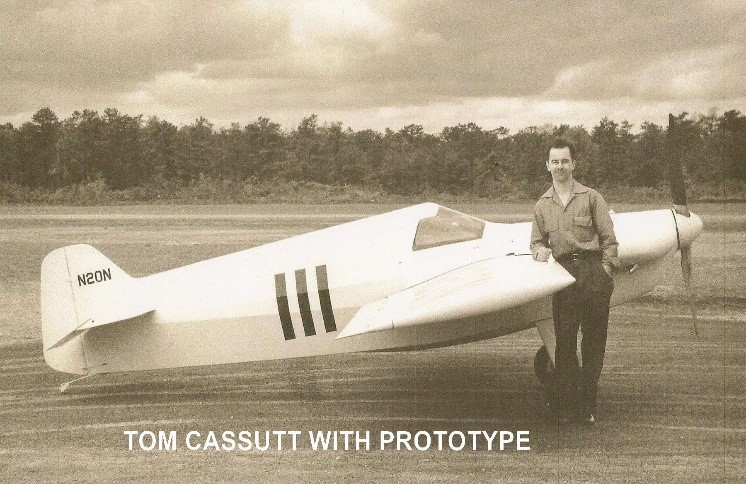
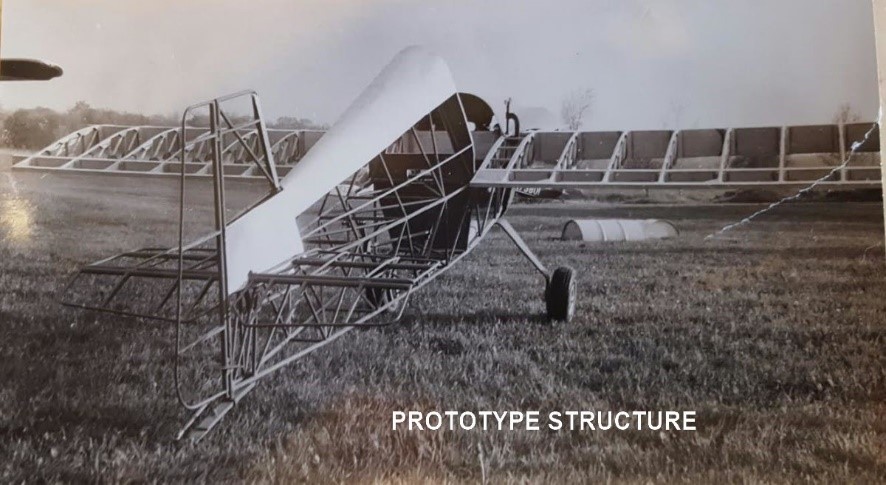
General characteristics
- Crew: One pilot
- Length: 16 ft 0 in (4.88 m)
- Wingspan: 15 ft 0 in (4.57 m)
- Height: 4 ft 0 in (1.22 m)
- Wing area: 68 ft2 (6.3 m2)
- Empty weight: 500 lb (227 kg)
- Gross weight: 850 lb (386 kg)
- Powerplant: 1 × Continental O-200, 100 hp (65 kW)
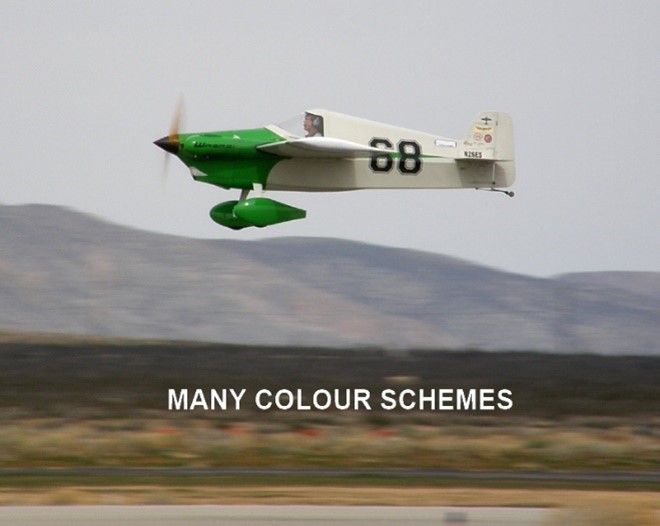
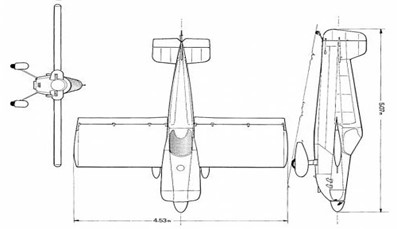
A few years ago I saw one at Duxford Imperial War Museum that really caught my eye. An internet search showed that it was owned by Richard Grace and was one of three that do the air show circuit in the UK as “The Dukes of Cassutt” (see Photo). Richard is son of Carolyn Grace who owns and flies a two seat Spitfire!! – (another interesting story)
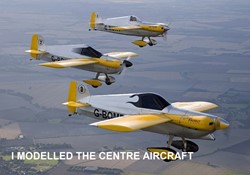
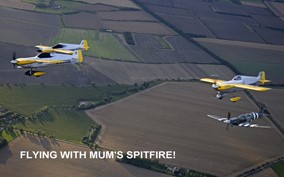
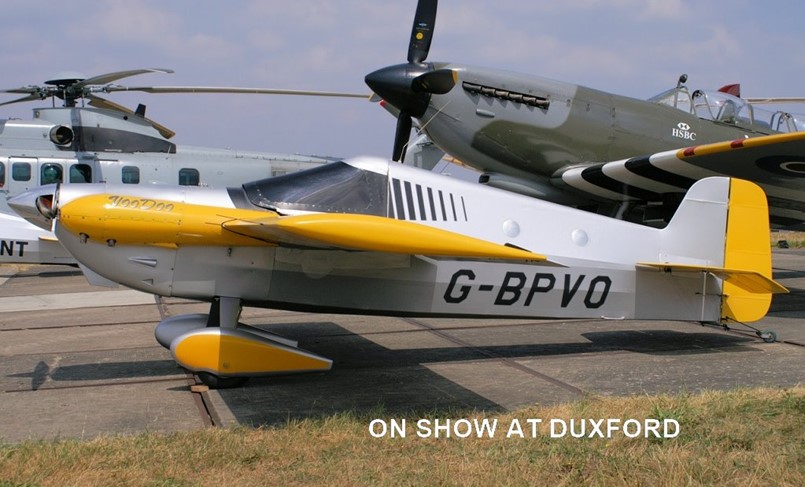
Anyway, a quick scribble on a big piece of paper had a plan drawn up for a quick build scale like model. The one owned by Richard was a long wing and I decided to model that which came to 70 inches (1.78 m) for a one third scale.
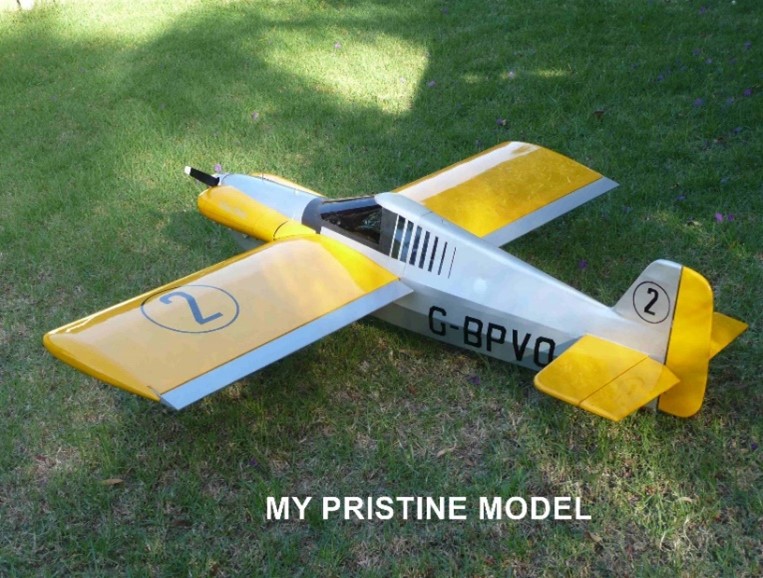
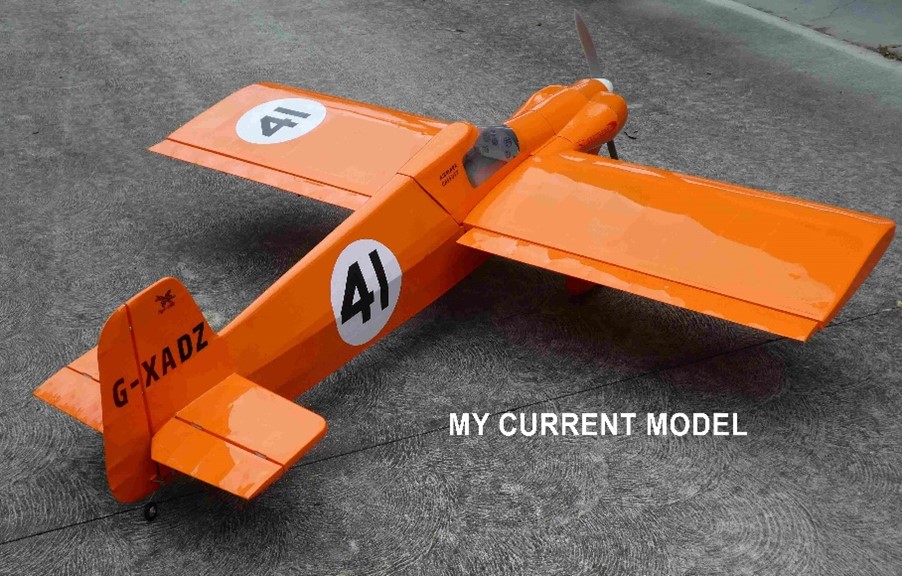
This model is conventional build with a relatively thick wing to improve aerobatic performance, Saito 100 four stroke power, fuselage covered in aluminium Glosstex, wings and tail in Monocote – it was quick to build, looks the part and is light weight.
I gave it away to a friend in Ingleburn before I moved to Brandy Hill but missed it so much I built another – 60 inch (1.53 mtrs). The full size was built in the UK by Airmark Cassutt for racing there. The colour and markings are correct from photos as the aircraft was written off in the 1970’s. This time electric powered with a 1200 watt motor and 4S/3300mAh battery. All balsa and ply and covered with Sunland heat shrink film. Very sensitive on elevator with that big chord wing. But great fun to fly now it is tamed.
Enjoy the photos. Some pics courtesy Richard Grace web site.
Alistair
Trevor is a relatively new member to the club and when I heard he was building a foam board plane I asked whether he would be able to write an article about the build.
Here's the article I hope you all enjoy it and cant wait to see the Spitfire fly.